Greetings, fellow SkyWatchers! Have you been watching Jupiter and the Moon make a pass at each other in the early morning sky? What an incredible sight. With the slightly later rise of Selene during the weekend hours, we can take advantage of the earlier evening to do some deep sky studies. However, if you’re just in the mood to kick back in a lawn chair and do a little stargazing, you’ll probably spot some early Perseid meteors gracing the night. I’ll give you a full report on the watching the Perseid Meteor shower just a little bit closer to the date so you won’t forget! For now… Why not join me in the back yard? We’ve got a little history, a little mystery and a telescope waiting for you…
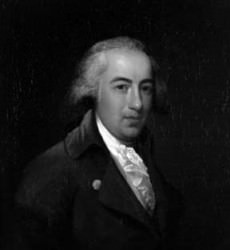 Friday, August 7, 2009 – Today marks the 1726 birth of James Bowdoin, astronomer and friend of Benjamin Franklin. Although Bowdoin suffered many years from consumption, which was finally the cause of his death, he was always vigorous in public affairs. He was one of the founders, and first president, of the American academy of arts and sciences, and left it his valuable library. He also aided in founding the Massachusetts humane society, and in 1779 was made a fellow of Harvard College. He was given the degree of LL.D. by the University of Edinburgh, and was a fellow of the royal societies of London and Edinburgh. Several of his papers appear in the memoirs of the society, among which is one whose object is to prove that the sky is a real concave body enclosing our system, and that the Milky Way is an opening in this, through which the light of other systems reaches us.
Friday, August 7, 2009 – Today marks the 1726 birth of James Bowdoin, astronomer and friend of Benjamin Franklin. Although Bowdoin suffered many years from consumption, which was finally the cause of his death, he was always vigorous in public affairs. He was one of the founders, and first president, of the American academy of arts and sciences, and left it his valuable library. He also aided in founding the Massachusetts humane society, and in 1779 was made a fellow of Harvard College. He was given the degree of LL.D. by the University of Edinburgh, and was a fellow of the royal societies of London and Edinburgh. Several of his papers appear in the memoirs of the society, among which is one whose object is to prove that the sky is a real concave body enclosing our system, and that the Milky Way is an opening in this, through which the light of other systems reaches us.
What do you think he would have thought if he could be with us tonight as we return to our studies with the globular M14, one of the clusters nearer to the galactic center? Located about 16 degrees (less than a handspan) south of Alpha Ophiuchi (RA 17 37 36 Dec +03 14 45), this 9th magnitude, Class VIII cluster can be spotted with larger binoculars, but only fully appreciated with the telescope.
When studied spectroscopically, globular clusters are found to be much lower in heavy element abundance than stars such as own Sun. These earlier generation stars (Population II) began their formation during the birth of our galaxy, making globular clusters the oldest formations we can study. In comparison, the disk stars have evolved many times, going through cycles of starbirth and supernova, which in turn enriched the heavy element concentration in star-forming clouds. Of course, as you may have guessed, M14 breaks the rules. M14 contains an unusually high number of variable stars—in excess of 70—with many of them known to be the W Virginis type. In 1938, a nova appeared in M14, but it was undiscovered until 1964, when Amelia Wehlau of the University of Ontario was surveying the photographic plates taken by Helen Sawyer Hogg. The nova was revealed on eight of these plates taken on consecutive nights and showed itself as a 16th magnitude star—andwas believed to be at one time almost five times brighter than the cluster members. Unlike 80 years earlier with T Scorpii in M80, actual photographic evidence of the event existed. In 1991, the eyes of the Hubble were turned its way, but neither the suspect star nor traces of a nebulous remnant were discovered. Then, 6 years later, a carbon star was discovered in M14. To a small telescope, M14 will offer little to no resolution and will appear almost like an elliptical galaxy, lacking in any central condensation. Larger scopes will show hints of resolution, with a gradual fading toward the cluster’s slightly oblate edges. A true beauty!
 Saturday, August 8, 2009 – On this date in 2001, the Genesis Solar Particle Sample Return mission was launched on its way toward the Sun. On September 8, 2004, it returned with its sample of solar wind particles. Unfortunately, a parachute failed to deploy, causing the sample capsule to plunge unchecked into the Utah soil. Although some of the specimens were contaminated, many did survive the mishap. So what is ‘‘star stuff?’’ Mostly highly charged particles generated from a star’s upper atmosphere flowing out in a state of matter known as plasma.
Saturday, August 8, 2009 – On this date in 2001, the Genesis Solar Particle Sample Return mission was launched on its way toward the Sun. On September 8, 2004, it returned with its sample of solar wind particles. Unfortunately, a parachute failed to deploy, causing the sample capsule to plunge unchecked into the Utah soil. Although some of the specimens were contaminated, many did survive the mishap. So what is ‘‘star stuff?’’ Mostly highly charged particles generated from a star’s upper atmosphere flowing out in a state of matter known as plasma.
Before moonrise, let’s study one of the grandest of all solar winds as we seek out an area about three finger-widths above the Sagittarius teapot’s spout as we have a look at the magnificent M8 (RA 18 03 37 Dec +24 23 12). Visible to the unaided eye as a hazy spot in the Milky Way, fantastic in binoculars, and an area truly worth study in any size scope, this 5,200-light-year-diameter area of emission, reflection, and dark nebulae has a rich history. Its involved star cluster—NGC 6530—was discovered by Flamsteed around 1680 and the nebula by Le Gentil in 1747. Cataloged by Lacaille as III.14 about 12 years before Messier listed it as number 8, its brightest region was recorded by John Herschel, and dark nebulae were discovered within it by Barnard.
Tremendous areas of starbirth are found in this region, while young, hot stars excite the gas in a region known as the ‘‘Hourglass’’ around the stars Herschel 36 and 9 Sagittarii. Look closely around cluster NGC 6530 for Barnard Dark Nebulae B 89 and B 296 at the nebula’s southern edge. . .and try again on a darker night. No matter how long you choose to swim in the ‘‘Lagoon,’’ you will surely find more and more things to delight both the mind and the eye!
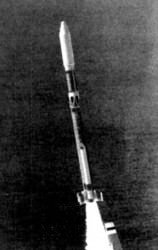 Sunday, August 9, 2009 – On this date in 1976, the Luna 24 mission was launched on a return mission of its own, not to retrieve solar winds’ samples but lunar soil! Remember this mission as we take a look at its landing site in the weeks ahead. Tonight we’ll return to the nebula hunt as we head about a finger-width north and just slightly west of M8 for the ‘‘Trifid’’ (RA 18 02 23 Dec +23 01 48).
Sunday, August 9, 2009 – On this date in 1976, the Luna 24 mission was launched on a return mission of its own, not to retrieve solar winds’ samples but lunar soil! Remember this mission as we take a look at its landing site in the weeks ahead. Tonight we’ll return to the nebula hunt as we head about a finger-width north and just slightly west of M8 for the ‘‘Trifid’’ (RA 18 02 23 Dec +23 01 48).
M20 was discovered by Messier on June 5, 1764, and much to his credit, he described it as a cluster of stars encased in nebulosity. This is truly a wonderful observation, since the Trifid could not have been easy to spot, given his equipment. Some 20 years later William Herschel (although he usually avoided repeating Messier objects) found M20 of enough interest to assign separate designations to parts of this nebula—IV.41, V.10, V.11, V.12.
The word ‘‘Trifid’’ was used to describe its beauty by John Herschel. Although M20 is a very tough call in binoculars, it is not impossible with good conditions to see the light of an area that left its home nearly a millennium ago. Even smaller scopes will pick up this faint, round, hazy patch of both emission and reflection, but you will need aversion to see the dark nebula that divides it. This was cataloged by Barnard as B 85. Larger telescopes will find the Trifid as one of the very few objects that actually appears much in the eyepiece as it does in photographs—with each lobe containing beautiful details, rifts, and folds best seen at lower powers. Look for its cruciform star cluster and its fueling multiple system while you enjoy this triple treat tonight!
For now, keep an eye on the sky for the coming of the annual Perseid Meteor Shower! You’ll see a great increase in activity beginning now – despite the moonlight. The peak will be mid-week, but I’ll be back with an update on who, when, where, why and how very soon… Until then? Wishing you clear skies!
This week’s awesome images are (in order of appearance): James Bowdoin (historical image), (credit—NOAO/AURA/NSF), Genesis Spacecraft (credit—NASA), M8: the Lagoon Nebula (credit—NOAO/AURA/NSF), Luna 24 launch (press release photo) and M20: the Trifid nebula (credit—Palomar Observatory, courtesy of Caltech). We thank you so much!


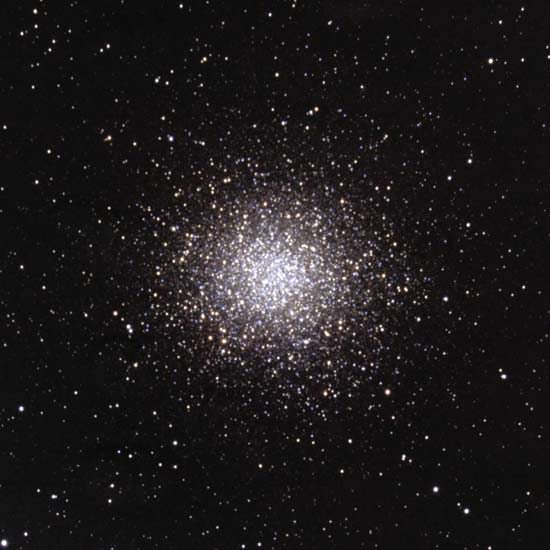
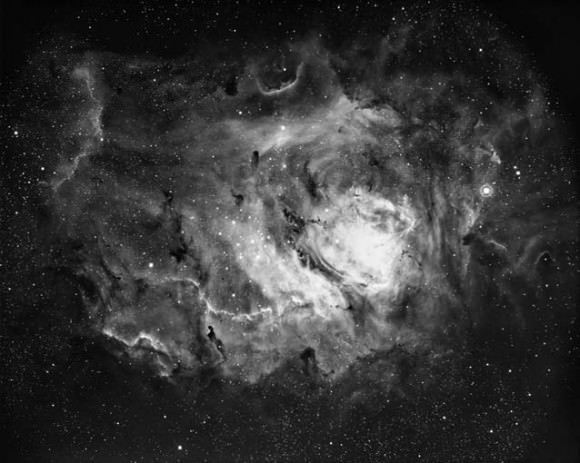
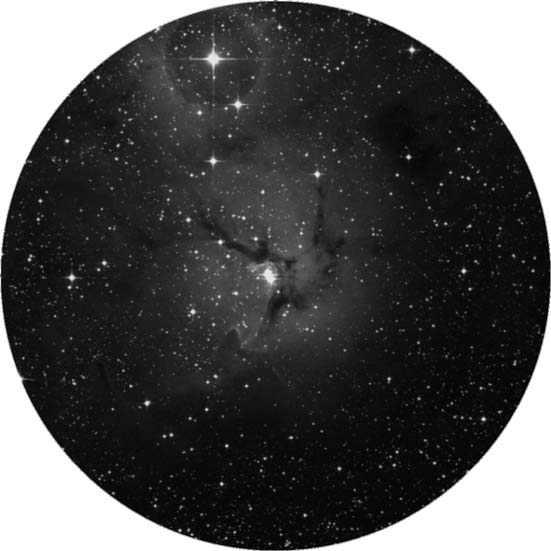
I have been enjoying Jupiter and it’s moons the past few days, although for me I see it between 9p and bedtime at night.
keep up the good work, microverses!
Great site, and very informative. I just found your site for the first time today and look forward to return visits. I am particularly interested in topics related to binocular astronomy! Thank you! Ted